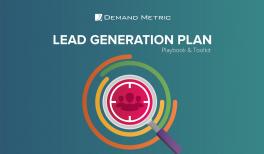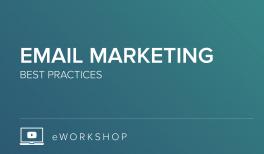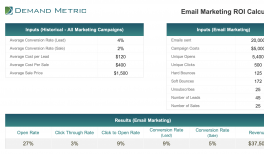In July 2013, Demand Metric conducted a benchmarking study to assess the effectiveness of email as a marketing channel, and to understand the impact of multiple factors known to negatively impact email marketing campaigns.
B2B Email Marketing Benchmark Report
Resource Overview
Related Resources
Executive Summary
Research conducted earlier this year by Demand Metric confirmed that email is still the most favored marketing channel for businesses. Even with the growing popularity of social media, email remains at the top of the heap.
This report details results from the Demand Metric study on B2B email marketing effectiveness, whose goal was to understand how effective email is as a marketing channel, and specifically to understand the impact of multiple factors known to negatively impact email marketing effectiveness.
A survey was used to collect the data for this study, and its analysis provides these key findings:
- Email is a dominant marketing channel, with 91 percent of this survey’s participants reporting that they use it to some degree. However, only 28 percent of survey respondents report that their email marketing or lead generation efforts are becoming more effective.
- A majority of this study’s participants (61 percent) reported average email open rates of below 15 percent. By comparison, the Silverpop report, “2013 Email Marketing Benchmark Study: An Analysis of Messages Sent Q1-Q2 2012,” shows a 2012 average email open rate of 19.7 percent.
- Participants from different industries reported significant variation of open rates, with Financial Services doing the worst (71 percent reporting an open rate of 15 percent or less) and Manufacturing doing the best (54 percent reporting an open rate of 15 percent or less).
- Ignorance abounds with respect to understanding of the impact of catch-all, invalid and high-risk email addresses. Thirty six percent of respondents don’t know how catch-all addresses are impacting them. Seventeen percent don’t know the percentage of invalid email addresses in their database, and 44 percent don’t know the percentage of high-risk emails addresses that are in their databases.
- A majority of marketers (62 percent) in this study do not know what their digital reputation is as an email sender, as measured by Sender Score (www.senderscore.org). Of those who claim to know, they have a dramatically inflated view of it, with merely three percent reporting a Sender Score of 70 or lower, compared to a recent Sender Score rolling average of 38.3. This is despite the fact that it takes only minutes to obtain a Sender Score online, and it is free.
This report details the results and insights from the analysis of the study data.
Table of Contents
- Introduction
- Executive Summary
- Research Methodology
- Email Marketing Landscape
- Email Performance
- The Email Marketing Minefield
- Email List Maintenance
- Email Reputation
- Analyst Bottom Line
- Acknowledgements
- About Demand Metric
Research Methodology
The Demand Metric B2B Email Marketing Effectiveness Survey was administered online over a period of July 5th through July 16th 2013. During this period, over 530 responses were collected, 478 of which were complete and not duplicates and were therefore included in the analysis.
All members of the Demand Metric community received email invitations to participate in the survey, and participation was encouraged through a random draw incentive for an iPad Mini. While respondent email addresses were collected in order to facilitate the prize drawing, no identifying information was considered in the analysis of the survey data.



